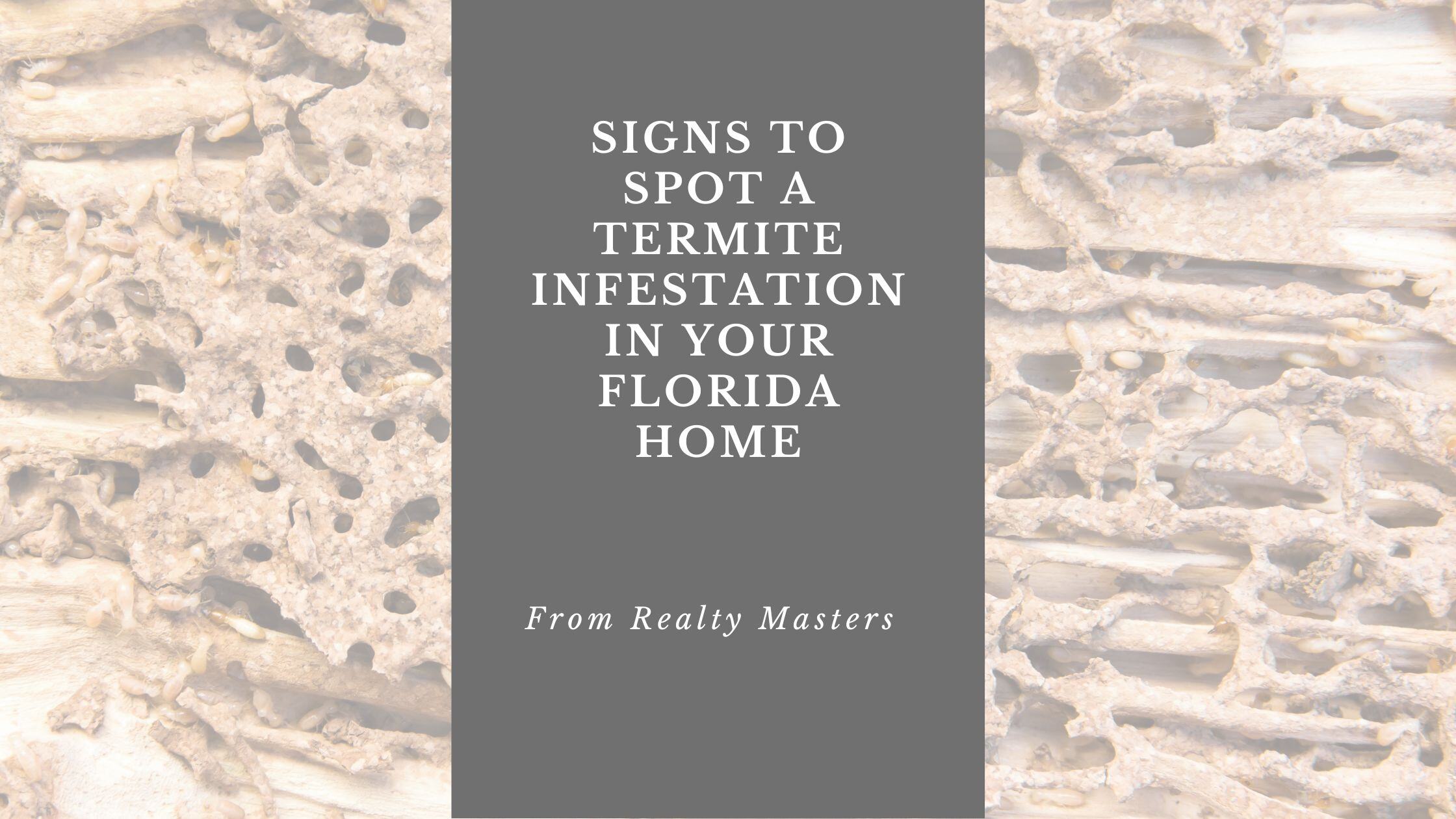Termites are a significant concern for Florida homeowners, often causing damage that goes unnoticed until it’s too late. Recently, we visited a home where a tenant had unknowingly lived with a termite infestation. While termites are often associated with swarms of flying insects, the signs can be much more subtle. Here’s what to watch for!
Signs of a Termite Infestation
We recently had a tenant move out of a property that had signs of a termite infestation that was undiscovered during the tenancy. We wanted to use this opportunity to educate our tenants and homeowners about the signs of termites in their Florida homes. Subterranean termites are the most common type in Florida. They originate from the ground and can infiltrate your home without leaving obvious evidence. Because they build mud tubes to travel between their colony and food sources, their presence often goes unnoticed, especially when these tubes are hidden inside walls, beneath flooring, or behind large furniture. Subterranean termites can silently infest a home for years before visible signs, such as damaged wood or discarded wings, become apparent.
During our visit to this home, we identified very subtle indicators of termites we wanted to share with you, and provide additional items to look out for that were not present in this home.
- Dirt on Ceilings or Seams of Wall: Look closely at your ceiling or where it meets the walls. Dirt streaks or patches in these areas can signal termites tunneling through unseen spaces.
- Rot in Window Frames and Baseboards: Damage to wood, such as soft or rotting window frames and baseboards, is another common sign. Termites feed on cellulose found in wood, and their activity weakens these structures over time.
- Mud Tubes Along the Foundation or Wall: Subterranean termites construct mud tubes to travel between their colony and food sources, which can often be hidden inside walls but may also appear along the foundation or on interior walls. These tubes can form both inside and outside your home's foundation and are a key indicator of termite activity. While this home showed no visible mud tubes, it’s essential to remain vigilant and watch for their presence.
Be mindful of subtle changes in your home and make it a habit to check commonly overlooked areas. These include windowsills, which can often be hidden by blinds or curtains; the inside of closets; and under sinks where moisture can accumulate. Additionally, inspect behind large furniture pieces, under and around appliances, attic spaces, and basement corners, as these areas are prone to being obstructed and can harbor unnoticed issues like dust buildup, mold, or pests. Regularly checking these spots can help you catch potential problems early.
If you are a Realty Masters tenant leasing from us, we encourage you to perform a thorough inspection of your home and promptly report any concerns to our team. For homeowners, we strongly recommend scheduling yearly inspections with a licensed pest control expert. If it has been a while since your last inspection, now is the time to reach out and arrange one to ensure your home remains protected against potential infestations.


